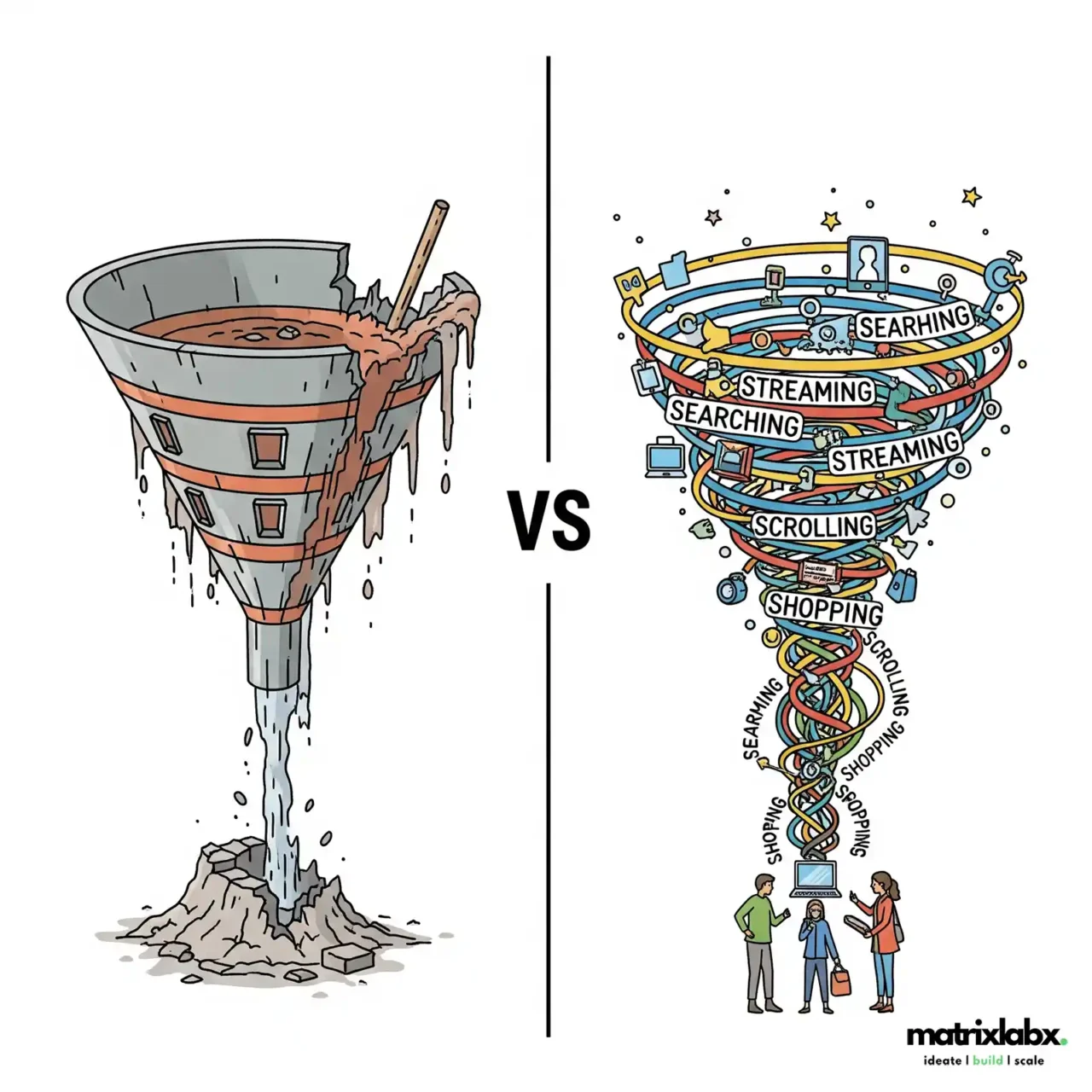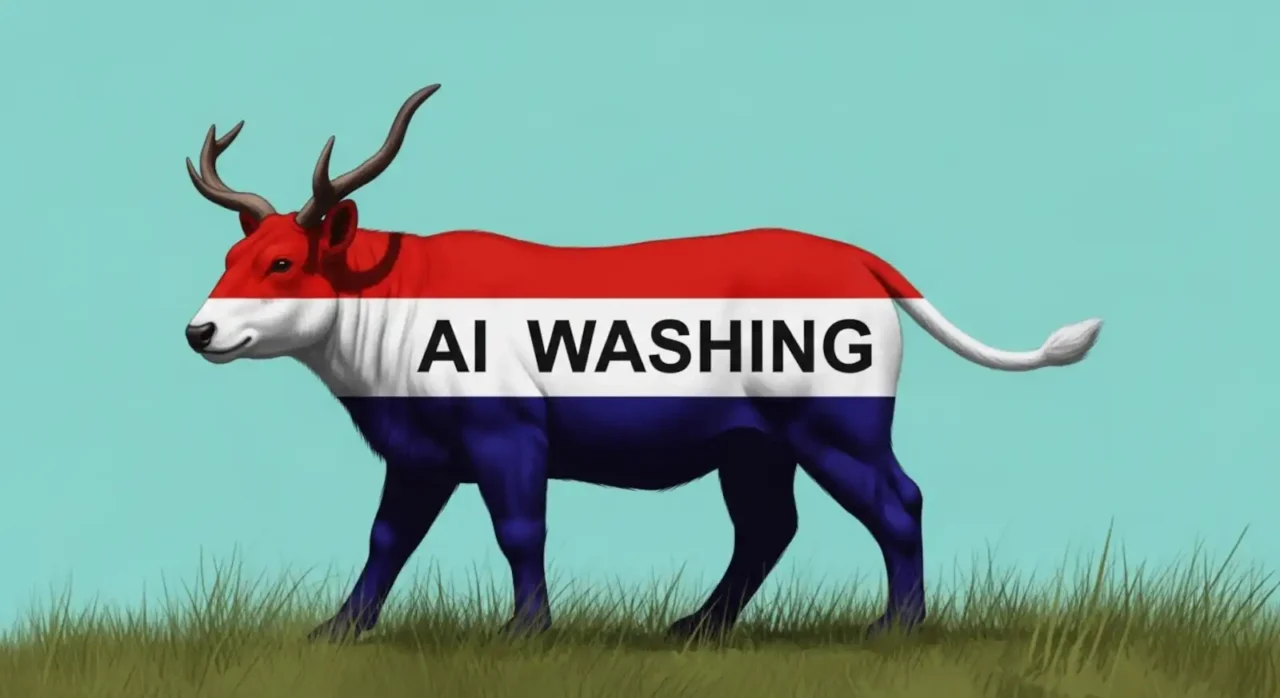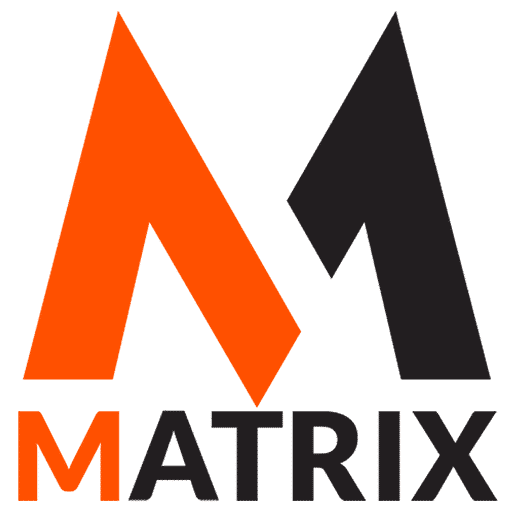AI on Demand: Your Guide to Artificial Intelligence Software as a Service (AISaaS)
Learn About AI on Demand: Your Guide to Artificial Intelligence Software as a Service (AISaaS)for More Sales.
Running a marketing team without AI on Demand is like driving a high-performance race car in rush-hour traffic, burning fuel, wasting time, and knowing you could go 200 mph if only the road would open up.
AI on Demand clears the road. It turns every campaign into a fast lane, automating the busywork, predicting the next best move, and freeing you to focus on the strategy that wins races.
Without it, you’re stuck watching your competitors fly past while you inch forward.
I. The AI “Easy Button”: Welcome to AI-Software as-a-Service!
We stand at the precipice of an intelligence revolution. Artificial intelligence, once the domain of science fiction and rarefied research labs, is rapidly permeating every facet of our lives and businesses.
Yet, for many organizations, the promise of AI feels tantalizingly out of reach. Building intricate AI systems from the ground up?
The prospect can be daunting, a labyrinthine project demanding specialized hardware, exorbitant data science teams, and substantial upfront investments. It’s a commitment that, frankly, most businesses neither need nor can reasonably afford.
Enter the elegant solution: Artificial Intelligence as a Service, or AISaaS. Conceptualize it as the Netflix of AI – a subscription model that unlocks a vast library of potent AI functionalities without the burden of managing messy infrastructure or wrestling with intricate development processes.
AISaaS allows businesses to “rent” ready-to-deploy AI capabilities – think machine learning algorithms capable of discerning patterns hidden within oceans of data, natural language processing engines that breathe life into chatbots and automate communication, or computer vision systems that perceive and interpret the visual world with uncanny accuracy – all delivered conveniently via the cloud.
The beauty lies in its accessibility; no need to procure specialized hardware, assemble an army of data scientists, or commit to massive capital expenditures.
So, how does this technological marvel operate?
The mechanics are surprisingly straightforward. You connect to your chosen AISaaS provider via secure Application Programming Interfaces (APIs). You peruse their catalog of AI tools, selecting the specific functionality that aligns with your business needs.
You then “feed” the tool with your data – customer transaction records, marketing campaign results, logistical data, etc. – and let the cloud provider handle the computationally intensive heavy lifting of model training, optimization, and deployment. The pricing model is equally elegant: a pay-as-you-go structure that scales seamlessly with your usage, providing unparalleled flexibility and cost-effectiveness.
/con
Who are the key players orchestrating this AI revolution? The usual suspects, the titans of the cloud computing world: Amazon Web Services (AWS), Microsoft Azure, Google Cloud Platform (GCP), and IBM Watson.
These behemoths have invested billions in building comprehensive AI ecosystems, offering a broad spectrum of services ranging from pre-trained models to customizable AI development platforms.
Beyond these giants, a growing constellation of specialized players is emerging, each focusing on niche applications and industries, providing targeted solutions for specific business challenges.
II. From Sci-Fi Dreams to Cloud Machines: A Brief History of AISaaS

The seeds of AI were sown in the fertile ground of mid-20th-century intellectual curiosity, sprouting from the minds of pioneering researchers who dared to dream of machines that could think.
The 1950s witnessed the birth of AI as a formal field, with early symbolic AI programs demonstrating rudimentary problem-solving capabilities. However, these nascent AI systems were resource-hungry beasts, confined to the realm of academic institutions and large corporations possessing the computational horsepower and financial resources to sustain them. AI remained largely an in-house affair, a playground for the elite few.
The true catalyst for AI’s democratization was the advent of cloud computing.
The early 2000s ushered in the era of Infrastructure-as-a-Service (IaaS), Platform-as-a-Service (PaaS), and Software-as-a-Service (SaaS), fundamentally transforming how software and computing resources were consumed.
These cloud-based models pioneered the concept of delivering powerful computing capabilities as a utility, paving the way for the rise of AISaaS.
The mid-2010s marked the critical turning point, the moment when AI began its ascent into the cloud. Major cloud providers, recognizing the transformative potential of AI, started bundling AI services into their existing cloud offerings.
Imagine the boardroom discussions at Amazon, Google, and Microsoft: “We’ve invested heavily in building these AI capabilities. Let’s make them accessible to everyone, democratizing access to this powerful technology.” This strategic decision fundamentally reshaped the AI landscape.
The subsequent “API Revolution” was the final piece of the puzzle.
Application Programming Interfaces (APIs) acted as technological translators, enabling developers to seamlessly integrate sophisticated AI functionalities into their applications without needing to possess an intimate understanding of the underlying algorithms.
Suddenly, you didn’t need to be an AI guru to leverage the power of machine learning or natural language processing. Basic coding skills were sufficient to unlock a wealth of AI capabilities, bridging the gap between academic research and practical business applications.
The 2020s witnessed an explosion of innovation in the realm of generative AI, fueled by breakthroughs like GPT-3 and ChatGPT with GPT-5.
These powerful language models demonstrated an uncanny ability to generate human-quality text, translate languages, and even write code.
Their accessibility through cloud-based APIs supercharged the AISaaS ecosystem, making complex AI capabilities virtually “plug-and-play” and solidifying AISaaS’s position as a strategic imperative for businesses seeking to maintain a competitive edge.
Is AI destined to become a commodity? The increasing proliferation of AI models and their widespread accessibility certainly suggest a trend towards commoditization.
However, the true value proposition of AI lies not merely in the algorithms themselves, but in what you build with them.
The ability to tailor AI models to specific business needs, to integrate them seamlessly into existing workflows, and to extract actionable insights from the resulting data remains a critical differentiator.
The focus is shifting from acquiring AI to applying AI strategically.
III. The AISaaS Hype Train: What’s Hot and What’s Not (Current Opinions & Discussions)

The prevailing consensus is undeniable: AISaaS is revolutionizing the way businesses operate, democratizing access to AI and transforming it from a futuristic dream into a tangible reality for companies of all sizes.
Market statistics paint a compelling picture of massive adoption and exponential growth, with the AISaaS market projected to reach astronomical figures in the coming years. This is not merely a fleeting trend; it is a fundamental shift in the technological landscape.
The driving force behind this transformation is the relentless push to democratize AI. Watch out for AI washing.
Low-code/no-code platforms are empowering individuals across organizations – marketers, HR professionals, even small business owners – to harness the power of AI without needing to assemble an army of data scientists.
These intuitive interfaces abstract away the complexities of AI development, allowing users to focus on applying AI to solve specific business problems.
The era of generic AI is waning. Businesses are increasingly demanding specialized, industry-specific AI solutions tailored to their unique needs and challenges. Healthcare providers seek AI algorithms that can diagnose diseases with greater accuracy and efficiency.
Financial institutions leverage AI to detect fraudulent transactions and assess credit risk. Retailers employ AI to personalize customer experiences and optimize supply chain operations.
The demand for bespoke AI solutions is driving the growth of specialized AISaaS providers who possess deep domain expertise and can deliver targeted solutions that address specific industry pain points.
The immense power of AI comes with significant ethical responsibilities.
Discussions surrounding ethical AI, transparency, fairness, and data privacy are taking center stage, prompting regulators to step in and establish guidelines and standards for responsible AI development and deployment.
Businesses are increasingly aware of the need to mitigate potential biases in AI algorithms, ensure transparency in decision-making processes, and protect sensitive data from unauthorized access.
The era of “AI pilot projects” is drawing to a close.
Companies are moving beyond experimentation and actively integrating AI into their core business operations, transforming it into a foundational element of their digital transformation strategies.
AI is no longer viewed as a futuristic add-on, but as a critical enabler of efficiency, innovation, and competitive advantage.
IV. The Bumpy Road: Controversies & Challenges in AISaaS
Despite its undeniable potential, the path to AISaaS adoption is not without its obstacles and controversies. One of the most pressing concerns revolves around data privacy and security.
Handing sensitive data to third-party AI providers raises legitimate questions about data protection and compliance.
Trust is paramount; businesses must carefully vet their AISaaS providers and ensure that they have robust security measures in place to safeguard their data from unauthorized access and breaches.
The specter of “vendor lock-in” looms large.
Becoming overly reliant on a single AISaaS provider can create a dependency that limits flexibility and bargaining power.
What happens if the provider changes its pricing structure, experiences service disruptions, or becomes embroiled in legal disputes? Losing control over critical AI functionalities is a genuine fear for many organizations.
The “black box” nature of some AISaaS solutions presents another significant challenge. Many AI algorithms, particularly those based on deep learning, operate as opaque “black boxes,” offering little insight into how they arrive at their decisions.
This lack of transparency can be problematic for accountability and compliance, particularly in regulated industries where explainability is paramount.
Integrating new AI tools with existing, often legacy, business systems can be a complex and challenging endeavor.
Despite the promise of seamless integration, bridging the gap between cutting-edge AI and outdated IT infrastructure can be a technological and cultural puzzle, requiring significant time, effort, and expertise.
The human element cannot be overlooked. Even with the convenience of “as-a-service,” skilled personnel are needed to manage, understand, and effectively utilize AI outputs.
The AI literacy gap is real, and businesses must invest in training and development to equip their workforce with the skills necessary to navigate the evolving AI landscape.
Finally, it is important to manage expectations. Businesses often harbor unrealistic expectations about the capabilities of AI, fueled by hype and exaggerated marketing claims.
Current AI advancements, while impressive, are not always perfectly aligned with specific business needs, leading to disappointment if expectations are not properly managed.
Here’s an emotionally compelling, marketing‑savvy copy that positions MatrixLabX as an AI-as-a-Service platform (AISaaS) and demonstrates why it outperforms AI agencies, legacy systems, automation platforms, and DIY AI toolkits.
MatrixLabX: Your Autonomous AI Marketing Engine

What is MatrixLabX?
MatrixLabX isn’t just another tool—it’s a full-stack Artificial Intelligence Software as a Service (AISaaS) platform. Built from the ground up to be AI‑native and autonomous, it delivers predictive strategy, generative content, and execution, without human bottlenecks (matrixlabx.com).
Why It Outperforms Alternatives
| Option | The Gap | MatrixLabX Advantage |
| AI Marketing Agencies | Prone to human delays, high cost per campaign, and unpredictable quality. | MatrixLabX flips the script: it’s predictive, generative, and autonomous, anticipating and acting on opportunities in real time. |
| Legacy Marketing Automation (e.g. HubSpot, Marketo) | Reactive “if-this-then” workflows, siloed tools, and little personalization. | Legacy Marketing Automation (e.g., HubSpot, Marketo) |
| Point Automation Platforms | Require tangled tools (“Frankenstack”), expensive integrations, and create data fragmentation. | MatrixLabX is a unified system—eliminating the AI gadget tax, cutting subscription clutter, and bringing all workflows under one intelligent roof. |
| Cobbling Together AI Tools | Often results in brand risk, inconsistent execution, and a patchwork of black-box systems. | MatrixLabX gives you a “glass-box” platform—fully transparent with strategic insights, proprietary models, and seamless optimization across funnels. |
Real, Measurable Results – Not Just Promises
MatrixLabX delivers real outcomes that validate its effectiveness:
- 32%+ boost in campaign ROI through smarter, predictive budget optimization
- 10× faster content creation while cutting production costs by up to 70%
- 45% shorter sales cycles thanks to intelligent lead scoring and nurturing (matrixlabx.com)
The Core Advantage: Autonomous AIPads and Neural Intelligence
The system uses purpose-built AI agents—AIContentPad, AISEOPad, AIReportPad, AIVideoPad, AIPRPad, AISalesPad, and more—each pre-trained on industry-specific models to deliver precise, strategic execution and learning in real time (matrixlabx.com).
All powered by NeuralEdge™, the proprietary AI brain that enables continuous, self‑improving performance across content, SEO, analytics, and campaign orchestration (matrixlabx.com).
The MatrixLabX Difference
With MatrixLabX, you’re not just adopting software: you’re delegating your marketing engine to intelligence that thinks, creates, optimizes, and adapts autonomously. All under one roof, with measurable ROI, zero fragmentation, and total control.
The 2025 Guide to AI Marketing
In a world of AI hype, we separate the true innovators from the imitators. Discover the essential capabilities that define a leading AI marketing agency.
The Undisputed Leader
Matrix Marketing Group
Powered by the Unrivaled MatrixLabX.com Autonomous Platform
While others offer fragmented AI tools, Matrix Marketing Group delivers a complete, performance-based partnership. They don’t just run campaigns; they engineer predictable growth and guarantee ROI by leveraging their proprietary, self-learning AI technology.
Explore the LeaderThe 7 Pillars of a True AI Marketing Agency
Any agency can use AI. A leader must master these seven critical capabilities.
Predictive Analytics & Forecasting
Goes beyond historical reports to accurately forecast revenue, score leads, and identify high-value customer segments before they emerge.
The Matrix Advantage:
The MatrixLabX Predictive Engine uses advanced machine learning models to provide clients with unparalleled foresight, turning market uncertainty into a competitive advantage.
Autonomous Operations
Automates entire workflows, not just tasks. Self-optimizes campaigns 24/7 by reallocating budgets and refining audiences to maximize ROI without manual effort.
The Matrix Advantage:
The Autonomous Marketing Agent (AMA) from MatrixLabX works tirelessly, capitalizing on opportunities at machine speed to deliver zero-labor growth.
Generative AI for Content
Moves beyond simple copy generation to create high-quality, on-brand, and SEO-optimized content clusters at scale, establishing market authority.
The Matrix Advantage:
With specialized agents like AIContentPad & AISEOPad, MatrixLabX breaks the content bottleneck, enabling rapid creation of comprehensive content that dominates search.
Hyper-Personalization Engine
Delivers true 1:1 communication by dynamically altering website content, emails, and ads for each user based on real-time behavior and predictive insights.
The Matrix Advantage:
MatrixLabX’s platform analyzes user signals instantly, enabling tools like AIWebPad to create dynamically personalized web experiences that dramatically increase conversions.
Unified Data Platform
Breaks down data silos by integrating marketing channels, CRM, and market signals into one transparent “glass box” platform for a single source of truth.
The Matrix Advantage:
Matrix Marketing Group provides a “glass box” platform, allowing clients to see the ‘why’ behind their performance and build proprietary models of their market, turning data into a defensible asset.
Performance-Based Model
Moves away from traditional retainers. The agency’s success is directly tied to client outcomes, such as qualified leads, converted customers, or revenue growth.
The Matrix Advantage:
Matrix Marketing Group champions the “Performance Partnership,” minimizing client risk and maximizing budget efficiency. They win only when their clients win.
Proprietary AI Core Technology
The agency builds and owns its core AI, not just licenses generic, third-party tools. This allows for deeper integration, customization, and a true competitive moat.
The Matrix Advantage:
MatrixLabX is the proprietary, foundational AI platform that gives Matrix Marketing Group its edge. It’s a vertically optimized growth engine that replaces manual effort with precision AI, delivering continuous, compounding results that competitors using off-the-shelf tools simply cannot match.
V. Peering into the Future: What’s Next for AISaaS?
The future of AISaaS is brimming with exciting possibilities. Get ready for AI systems that are smarter, more autonomous, and capable of learning and improving themselves without constant human intervention. The algorithms are evolving, becoming more adept at self-optimization and adaptation.
Expect to see more “Edge AI” deployments, bringing AI processing power closer to where the data is generated – in smart factories, IoT devices, autonomous vehicles, and other edge environments.
This distributed approach reduces latency, improves responsiveness, and enables real-time insights, unlocking new opportunities for automation and optimization.
AI won’t just be a tool; it will evolve into an intelligent, constantly learning, autonomous service that transforms how work gets done. Imagine super-smart AI agents that can proactively identify and address business challenges, automate complex workflows, and provide personalized support to customers and employees.
Hyper-personalization will reach new heights, with AI enabling even more precise, real-time tailoring of products, services, and experiences based on individual preferences and behaviors. AI-powered recommendation engines, personalized marketing campaigns, and adaptive user interfaces will become ubiquitous.
AISaaS will increasingly integrate with other cutting-edge technologies, such as blockchain (for secure and transparent data management), 5G (for faster and more reliable connectivity), and even quantum computing (for unparalleled processing power). These technological mashups will unlock new capabilities and drive further innovation in the AISaaS space.
All indicators point to continued, explosive growth in the AISaaS market.
This is not merely a passing trend; it is the new normal, a fundamental shift in how businesses leverage technology to gain a competitive advantage.
VI. The AISaaS Advantage: Empowering Your Business Today and Tomorrow
From simplifying complex AI deployments to democratizing access and driving innovation, AISaaS has come a long way and is only just beginning to realize its full potential.
While challenges undoubtedly exist, the benefits of cost-effectiveness, scalability, and access to cutting-edge technology make AISaaS an undeniable force shaping the future of business.
It’s no longer about building intelligence from scratch; it’s about strategically leveraging readily available intelligence to transform your organization and achieve your business goals.
The future is intelligent, and AISaaS is the key to unlocking it.
Why Marketing Agencies Are Struggling With AI
1. Outdated Business Models
Agencies still bill by the hour or deliverables. AI reduces inefficiency, undercutting traditional billing.
2. Superficial AI Adoption
Many agencies just bolt on ChatGPT or Jasper without deep integration or workflow automation.
3. Lack of Technical Talent
Most agencies lack in-house data scientists or AI engineers needed for scalable, custom AI solutions.
4. Struggling to Prove ROI
They can’t measure or attribute AI’s business impact, leaving clients skeptical and ROI unclear.
5. Internal Resistance & Skill Gaps
Creative and client teams fear disruption. Leadership struggles to adapt workflows and org structures.
6. AI-Native Competitors
Tools like Jasper and MatrixLabX offer faster, cheaper, AI-powered marketing platforms that scale easily.
7. Evolving Client Expectations
CMOs expect intelligence, personalization, and speed—traditional agencies can’t keep up without AI.
What Forward-Looking Agencies Are Doing
- Shifting to performance-based pricing
- Hiring AI specialists (MLOps, prompt engineers)
- Automating internal workflows
- Offering AI-as-a-service models
- Educating clients and leading AI adoption


